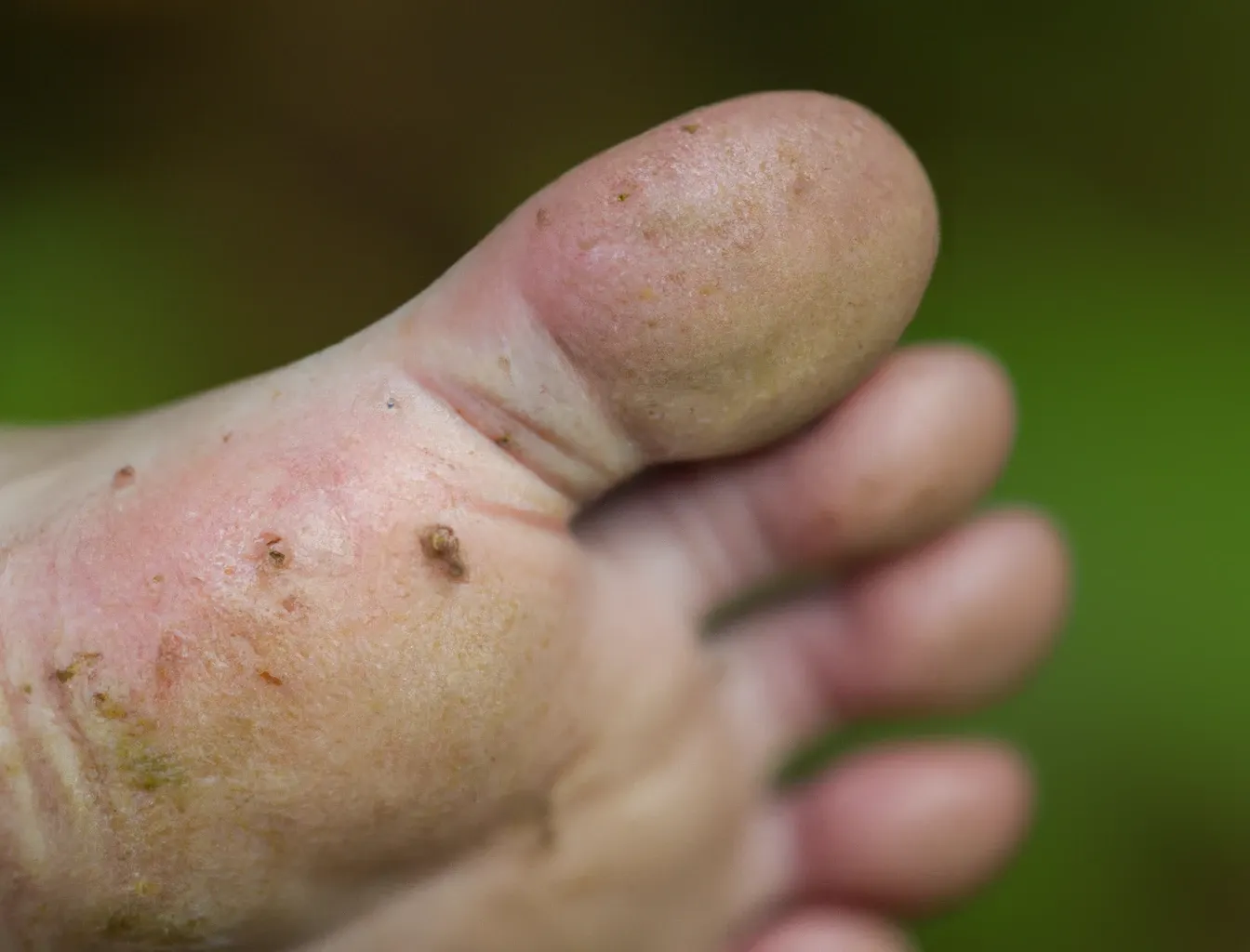"Breaking the Cycle of Foot Fungus: Revolutionary Treatment Routine Unveiled by Leading Fungal Expert"


30 years ago, tea tree oil has helped most people get rid of their fungus infection…
But these days only about half of those people will see longer-lasting, satisfying results. And the same goes for all the natural formulas out there.
And this is not because the solutions were useless, to begin with, but because traditional solutions have become less and less potent.
Why?
After all the years of living in the wild for billions of years fighting other bacteria and fungi to survive, the fungus has become very good at adapting to the treatments.
And not only that, the modern therapy and solutions were making it even STRONGER.
But researchers have noticed something very similar to bacteria.
When we invented antibiotics to kill dangerous bacterial infections, you could count on them to destroy most of the bacteria that plagued people.
But decades later, doctors had to deal with bacteria that are stronger than ever.
Decades of people using treatments but stopping short of completely killing the fungus meant that the remaining fungus learned how to survive, making the treatment useless the next time around.

We were getting fungus that is radically different and way stronger than the ones in the past just like the bacteria.
And most people won’t finish their treatments because they were wrongly informed or believed all the fungus is dead as soon as their nail is clear.
When it comes back again, because the treatment didn’t completely clear their fungus, people will move on to the next option.
By the time you’ve gone through 5 or 6 treatments your fungus already knows how to beat whatever type of treatments you throw at it.
And what is left is a mutated super fungus able to survive well under most treatments.
Plus, antifungals do nothing more than help pick off the weakest spores, which are the offspring of the fungi leaving only the strongest future fungi to survive.
And every time you choose a chemical solution to fight the fungus, you are breeding a new generation of super fungi.
The solution simply cannot come from using more dangerous and stronger chemicals for the fungus.
The solution has to work by activating the natural immunity of your skin and helping it fight against the infection.
Most of the solutions and chemicals are already toxic to the human body.
To find a way to kill it off naturally, while using the natural immunity of our body, there are essential tips that you absolutely need to know for treatment to work.

Luckily Dr. Kimberly Langdon, an international leading fungal expert, and her team has come up with a fungal treatment routine that will naturally kill foot fungus infection using the natural immunity of your body.
This routine was meticulously crafted through extensive trials with individuals of diverse ages and conditions, aiming to permanently eliminate foot fungus from its root cause.
In the accompanying video, Dr. Kimberly demonstrates the step-by-step routine and highlights the essential natural ingredients required to successfully eliminate stubborn fungus infections.
Click below to watch the comprehensive video.
Scientific references:
AbdelHamid D, Gomaa AH, Mohammed GF, et al. Evaluation of the therapeutic efficacy of tea tree oil in treatment of onychomycosis. Int J Pharmacogn Phytochem Res. 2017;9(12):1414-20.
Adams C, Athanasoula E, Lee W, et al. Environmental and genetic factors on the development of onychomycosis. Journal of Fungi. 2015 Aug 31;1(2):211-6.
Alessandrini A, Starace M, Bruni F, et al. An open study to evaluate effectiveness and tolerability of a nail oil composed of vitamin E and essential oils in mild to moderate distal subungual onychomycosis. Skin Appendage Disorders. 2020;6(1):14-8.
Behmanesh F, Pasha H, Sefidgar AA, et al. Antifungal effect of lavender essential oil (Lavandula angustifolia) and clotrimazole on Candida albicans: an in vitro study. Scientifica. 2015 Oct 13;2015.
Chee HY, Lee MH. Antifungal activity of clove essential oil and its volatile vapour against dermatophytic fungi. Mycobiology. 2007 Dec 1;35(4):241-3.
Chen CC, Yan SH, Yen MY, et al. Investigations of kanuka and manuka essential oils for in vitro treatment of disease and cellular inflammation caused by infectious microorganisms. Journal of Microbiology, Immunology and Infection. 2016 Feb 1;49(1):104-11.
Christenson JK, Peterson GM, Naunton M, et al. Challenges and Opportunities in the Management of Onychomycosis. Journal of Fungi. 2018 Jul 24;4(3):87.
Derby R, Rohal P, Jackson C, et al. Novel treatment of onychomycosis using over-the-counter mentholated ointment: a clinical case series. The Journal of the American Board of Family Medicine. 2011 Jan 1;24(1):69-74.
Eliopoulos GM, Perea S, Patterson TF. Antifungal resistance in pathogenic fungi. Clinical Infectious Diseases. 2002 Nov 1;35(9):1073-80.
Elshafie HS, Aliberti L, Amato M, et al. Chemical composition and antimicrobial activity of chia (Salvia hispanica L.) essential oil. European Food Research and Technology. 2018 Sep;244(9):1675-82.
Eman-Abdeen E, El-Diasty EM. Antifungal activity of clove oil on dermatophytes and other fungi. Int. J. Adv. Res. 2015;3(12):1299-305.
Fang JY, Tang KW, Yang SH, et al. Synthetic naphthofuran quinone derivatives are effective in eliminating drug-resistant Candida albicans in hyphal, biofilm, and intracellular forms: an application for skin-infection treatment. Frontiers in microbiology. 2020 Aug 26;11:2053.
Fisher TK, Scimeca CL, Bharara M, et al. A step-wise approach for surgical management of diabetic foot infections. Journal of vascular surgery. 2010 Sep 1;52(3):72S-5S.
Ghannoum M, Isham N. Fungal nail infections (onychomycosis): a never-ending story? PLoS pathogens. 2014 Jun 5;10(6):e1004105.
Disclaimer
THIS IS AN ADVERTORIAL For educational and entertainment purposes only. This site is not a part of the Facebook website or Facebook Inc. Additionally, this site is NOT endorsed by Facebook in any way. FACEBOOK is a trademark of FACEBOOK, Inc. DISCLAIMER : The website's content is based upon the author's opinion and is provided solely on an "AS IS" and "AS AVAILABLE" basis.